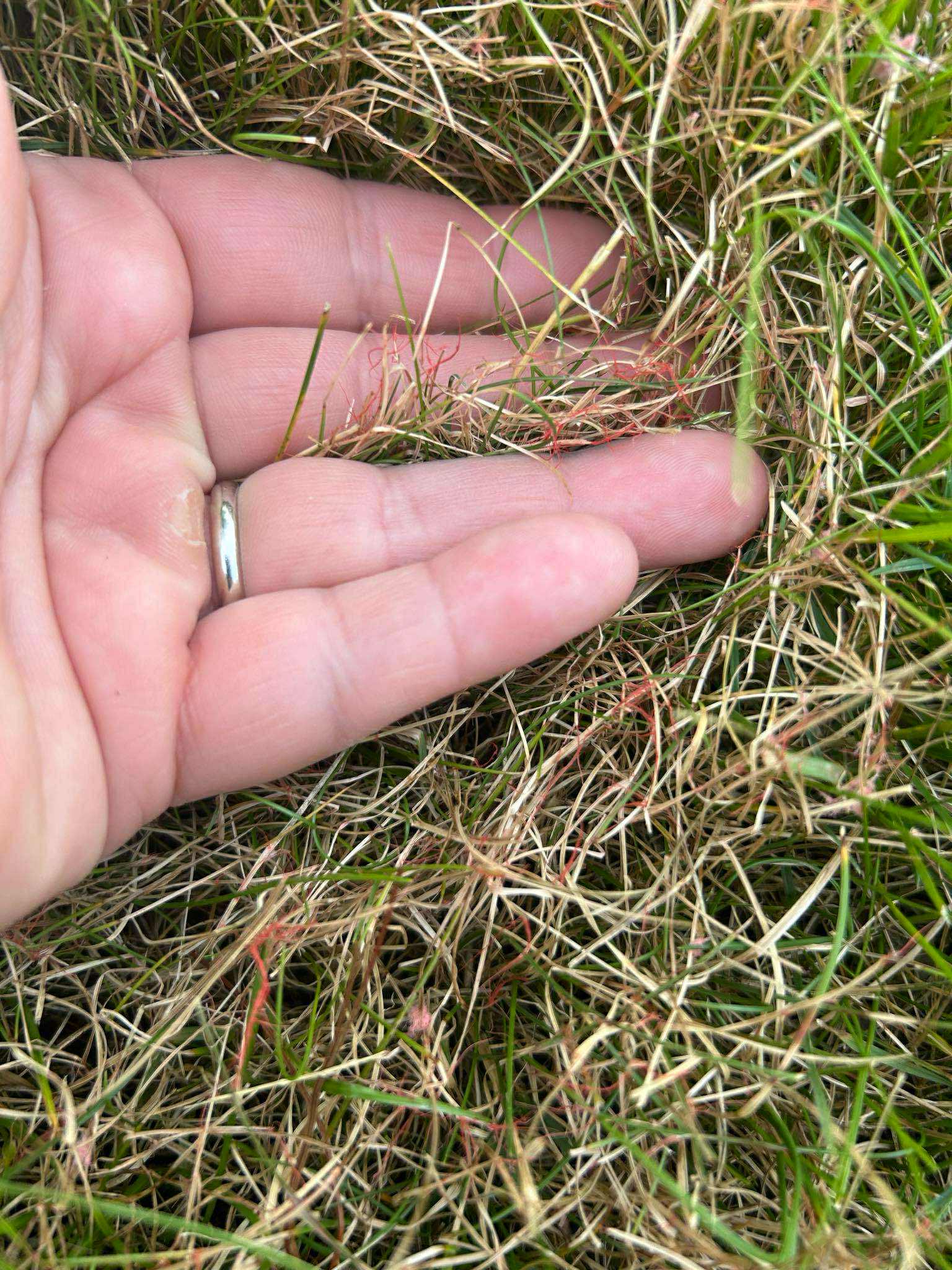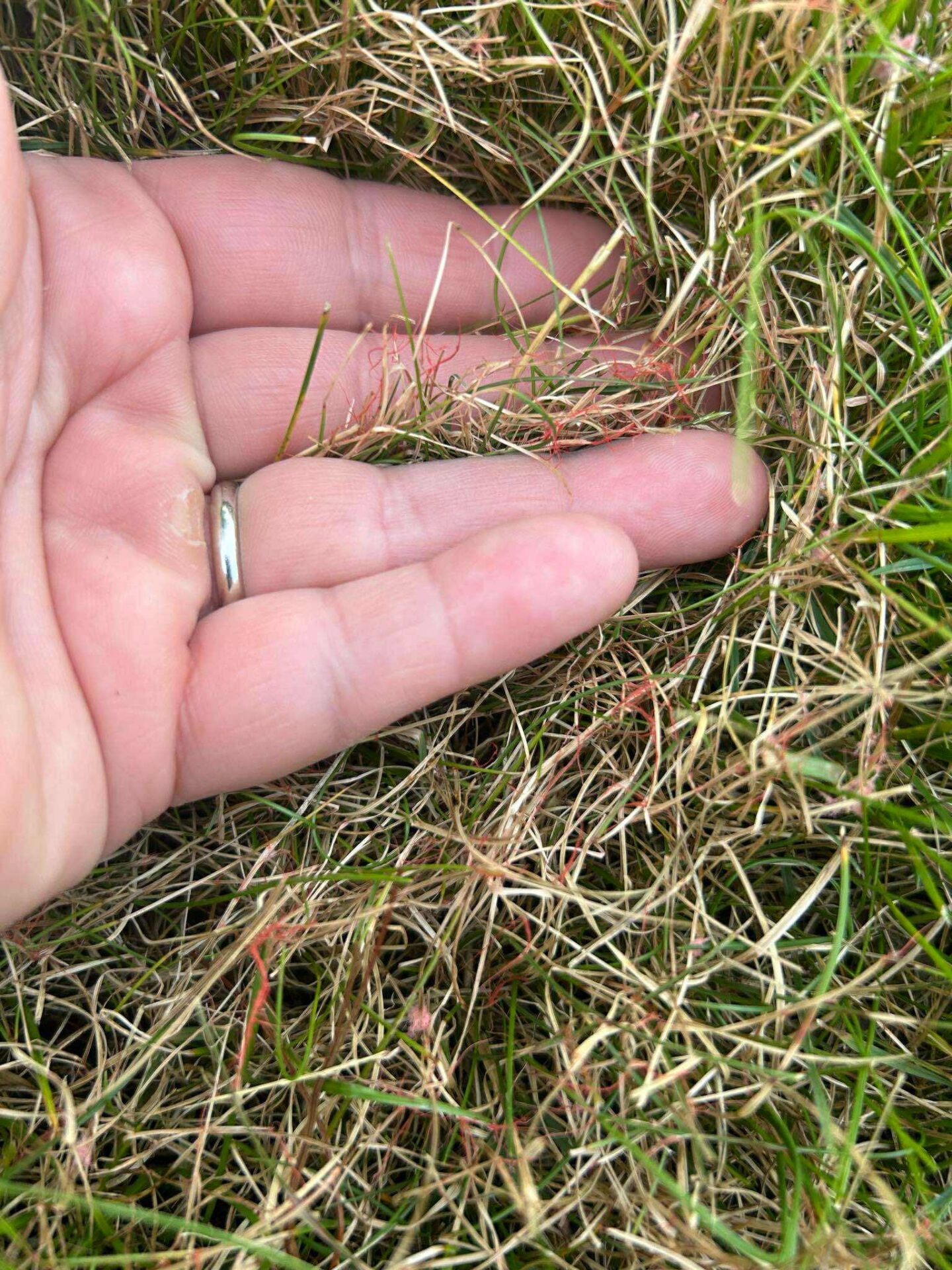Red Thread Disease in Lawns: What You Need to Know

Strange red or pink patches in your lawn could spell trouble.

If you’ve spotted strange pink or reddish patches in your lawn, you might be dealing with a common turf issue called Red Thread. While it can look a bit alarming, the good news is it’s usually a sign that your lawn needs a little extra TLC, not a total overhaul.
What Is Red Thread?
Red Thread is a turf disease caused by a fungus (Laetisaria fuciformis). It tends to pop up during cool, damp weather. Especially in spring and fall. Lawns that are low on nitrogen or under stress are the most vulnerable.
You’ll recognize Red Thread by:
- Patches of pink or red-tinged grass
- Thin, thread-like red strands clinging to the tips of grass blades
- Patch sizes ranging from a few inches to over a foot wide
It’s most common in cool-season grasses like perennial ryegrass, Kentucky bluegrass, and fine fescues.
What Causes It?
Red Thread thrives when:
- Nitrogen levels are too low
- Soil is compacted or poorly drained
- The lawn is consistently damp
- Mowing or watering practices are off
In short, it’s a stress response. A healthy, well-fed lawn is far less likely to develop this problem.
How to Treat and Prevent Red Thread
The good news? Red Thread usually clears up on its own once conditions improve—but you can speed recovery and prevent future outbreaks with a few smart steps:
1. Feed Your Lawn Properly
Low nitrogen is one of the biggest contributors. Our soil enrichment program provides your lawn with the balanced nutrients it needs to stay healthy and resilient.
2. Improve Airflow and Drainage
Aeration helps reduce compaction and improves airflow around the roots. This makes it harder for fungal diseases to take hold.
3. Mow and Water Wisely
Always mow with sharp blades and avoid cutting the grass too short. Water deeply but infrequently, and always in the early morning. Never at night.
4. Don’t Panic
Red Thread doesn’t kill your lawn. While it may look unsightly, the affected areas usually recover with good care and a proper feeding schedule.
Final Thoughts
Red Thread is one of the more common lawn issues we see, especially in the spring. It’s also one of the easiest to fix—with the right care, your lawn can bounce back quickly. If you’re seeing signs of stress or patchy pink areas in your grass, we’re here to help. Our team can assess your lawn, recommend a treatment plan, and get things looking green again in no time.

